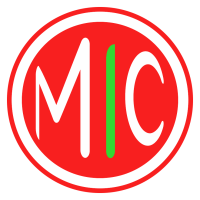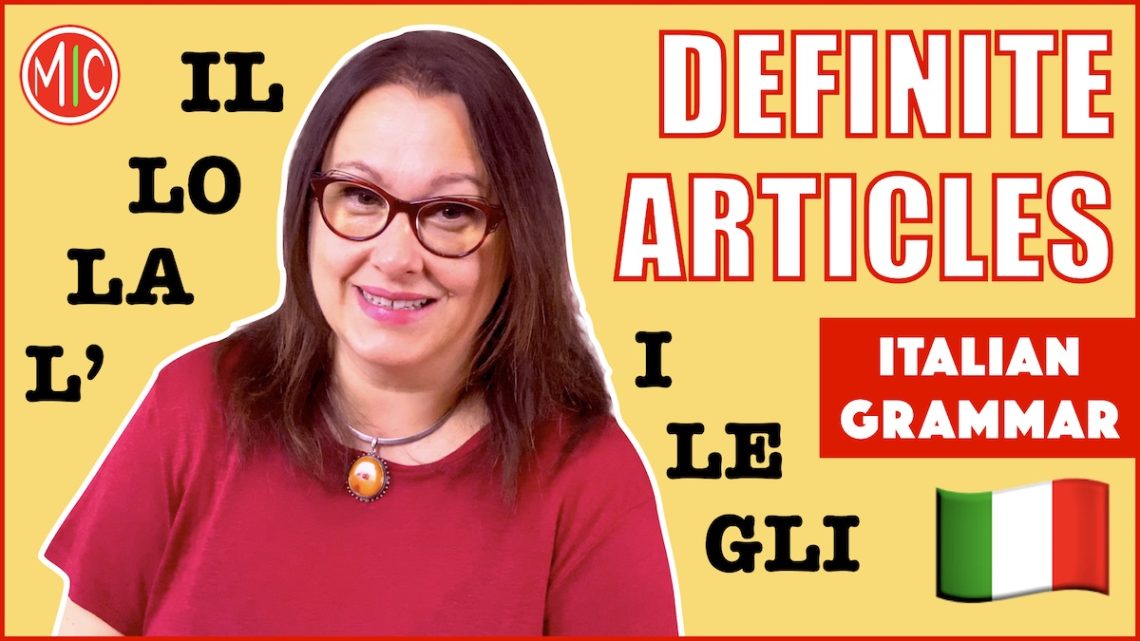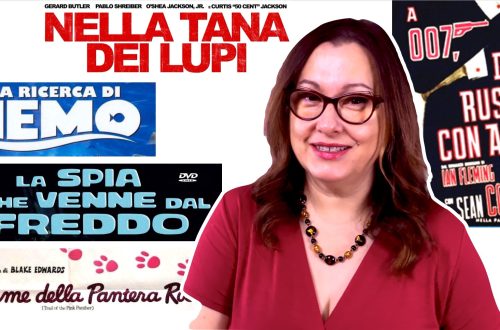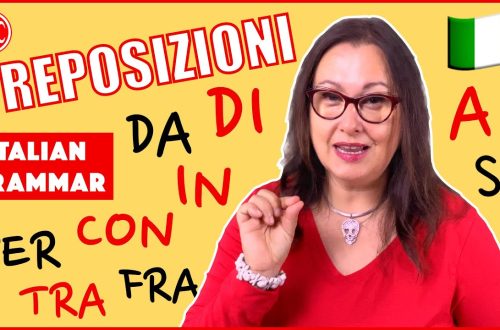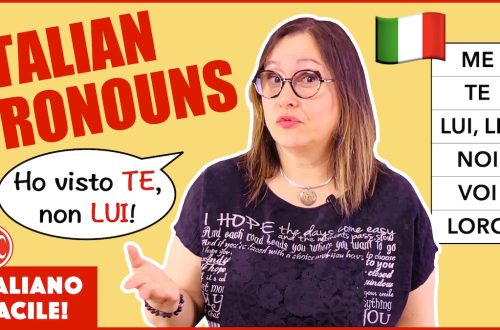L’amore. Gli spaghetti. La nonna. Il vino. L’Italia. What are the little words you see before all these nouns? They all mean the; they are all definite articles. What are they and why so many different ones? How to use definite articles in Italian? In this article I will answer these questions and I will help you make sense of this tricky feature of the Italian language.
What are definite articles?
Basic rule, which applies to many different languages, including English: definite articles are used to refer to a specific thing or person. So:
THE house you see is mine. = LA casa che vedi è mia.
THE black dog is mine. = IL cane nero è mio.
Here I am talking about a specific house and a specific dog, not just any house or any dog. However, the use of definite articles in Italian differs from English. Generally, in Italian we use definite articles more often than in English. This is why Italians tend to put the article the everywhere when they speak English.
For example, when you make a general statement the article is not used in English, but is required in Italian:
I love spaghetti. = Adoro GLI spaghetti.
Here we are talking about spaghetti in general, but we still use the definite article. It’s like the idea of spaghetti.
In English you don’t put the article before a possessive pronoun, but in Italian you do (although there are some exceptions). For example, in English you don’t say *the my house, but in Italian you say la mia casa.
Italian has seven definite articles
Now the tricky part: Italian has SEVEN different definite articles, while English has just one – the. Why so many articles? Because in Italian all words have to agree with each other in gender and number, so our the changes depending on whether we are talking about something masculine or feminine, singular or plural. Definite articles also change depending on the first letter(s) of the word that follows, because we hate ugly sounds!
In order to choose the correct article in Italian, you need to keep three things in mind:
- The gender of the noun you are talking about: is it masculine or feminine?
- The number: is it singular or plural? One or more than one?
- Finally, the first letters of that noun.
Masculine definite articles in Italian
Let’s put this into practice and see a few examples. We’ll start with a masculine singular noun, libro, book. The standard definite article for masculine singular nouns is il:
il libro, il cane, il mondo, il treno, il gatto
The plural form is i:
i libri, i cani, i mondi, i treni, i gatti
Let’s take another masculine singular noun: zucchero, sugar. Can we say *il zucchero? No, it doesn’t sound right. We say lo zucchero.
And this is the rule: if the masculine noun begins with S + consonant, GN, PN, PS, x, y, z, we use the article lo:
lo struzzo, lo gnomo, lo pneumatico, lo psichiatra, lo xilofono, lo yogurt, lo zucchero
And in this case the plural form is gli:
gli struzzi, gli gnomi, gli pneumatici, gli psichiatri, gli xilofoni, gli yogurt, gli zuccheri
What happens if our masculine noun begins with a vowel? Can we say *il albero or *lo albero? No, this doesn’t sound very nice either. We just use l’:
l’albero, l’esercizio, l’imbuto, l’orto, l’uomo
And since this is just a shortened version of lo, the plural form is, once again, gli:
gli alberi, gli esercizi, gli imbuti, gli orti, gli uomini
How to remember this? Try to pay attention to the sound. As we saw, some combinations sound wrong and awkward. *Il struzzo is difficult to say, right? Lo struzzo sounds much better! Listen to a lot of Italian, and over time you will also be able to hear these differences.
Feminine definite articles in Italian
Now some good news: when we have a feminine noun, things become much easier! The standard feminine article is la:
la carta, la bicicletta, la gatta, la pizza, la torta
The plural form is le:
le carte, le biciclette, le gatte, le pizze, le torte
If the feminine nouns begins with a vowel, we use a shortened version of la, just like we did for masculine nouns, and the article is l’:
l’amica, l’erba, l’invidia, l’onda, l’urgenza
It goes with saying; the plural form is still le:
le amiche, le erbe, le invidie, le onde, le urgenze
Let’s see all Italian definite articles in a table:
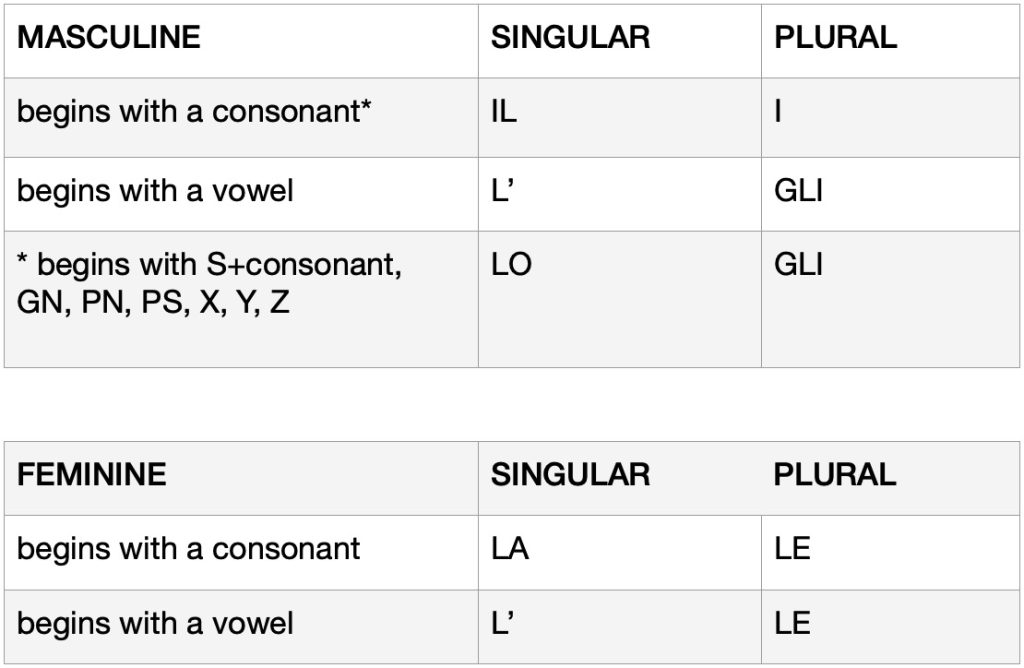
When to use the definite article in Italian
As I mentioned above, we use definite articles a lot in Italian. If you are in doubt, use it! It will probably be needed. However, there are some rules that can point you in the right direction.
We use the definite article before signore, signora and titles:
- la signora Verdi, il dottor Bianchi
However, we do not use it when addressing someone in direct speech: Buongiorno, signor Rossi!
We use it with languages:
- Studio l’italiano. – I study Italian / I am learning Italian.
- Mi piace lo spagnolo. – I like Spanish.
With names of countries:
- La Francia è un bellissimo Paese. – France is a wonderful country.
But we do not use it with the preposition in:
- Vado spesso in Italia. – I often go to Italy.
- Vivo in Toscana. – I live in Tuscany.
We use it with time:
- Che ore sono? Sono le undici. – What time is it? It’s 11.
And with dates:
- Il 2020. Il 15 giugno. Il 25 aprile 1945.
We use it with possessive adjectives like my, your, etc.:
- La tua casa è molto grande. – Your house is very big.
Finally, we us it with abstract nouns or in general statements:
- La vita è bella. – Life is beautiful.
- I gatti sono adorabili. – Cats are adorable.
Now, how to remember all this? With practice! We have an entire video of exercises with definite articles, try it. Then read and listen as much as you can. Take a text in Italian and notice when and how definite articles are used. A correct use of articles will make your Italian more natural, but do not obsess over it! Practice makes progress.
Grazie dell’attenzione! A presto,
Anna
Related video lessons:
